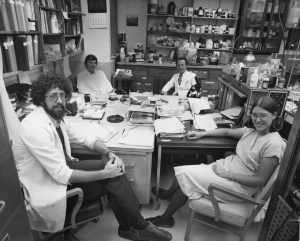
The UW–Madison Department of Surgery has always been at the forefront of innovation, especially in the field of transplantation. Despite not becoming its own division until 1995, transplantation has been a part of the Department of Surgery since 1966. In the 1970s and 1980s, a research team began exploring organ preservation, which led to the UW Solution and ultimately changed the field of transplantation.
The UW Solution is an organ preservation solution that significantly extends the viability of a donor organ. Originally created to extend the preservation of the pancreas, the UW Solution actually had the biggest impact on the liver. Prior to the UW Solution, a liver from a brain-dead donor had to be implanted within four to six hours of retrieval. With the use of the UW Solution, preservation time is extended to 20 hours. This was revolutionary, as location no longer had an influence on who could receive an organ.
Research into the UW Solution began when Dr. Folkert “Fred” Belzer, Department Chair from 1974-95, hired Jim Southard to be the director of his research program into organ preservation in 1976. Southard had previously completed his postdoctoral work at UW–Madison and was working at the Institute of Enzyme Research before coming to work with Dr. Belzer.
The research team of Drs. Belzer and Southard worked well together because their approaches complemented one another. The mix of endless ideas from Dr. Belzer and meticulous work from Dr. Southard allowed them to develop this life-changing solution.

Even though it has been nearly forty years since the UW Solution was created, transplant centers around the world still use it to preserve kidneys, livers, pancreases, and intestines. As a result, this discovery has saved thousands of lives.